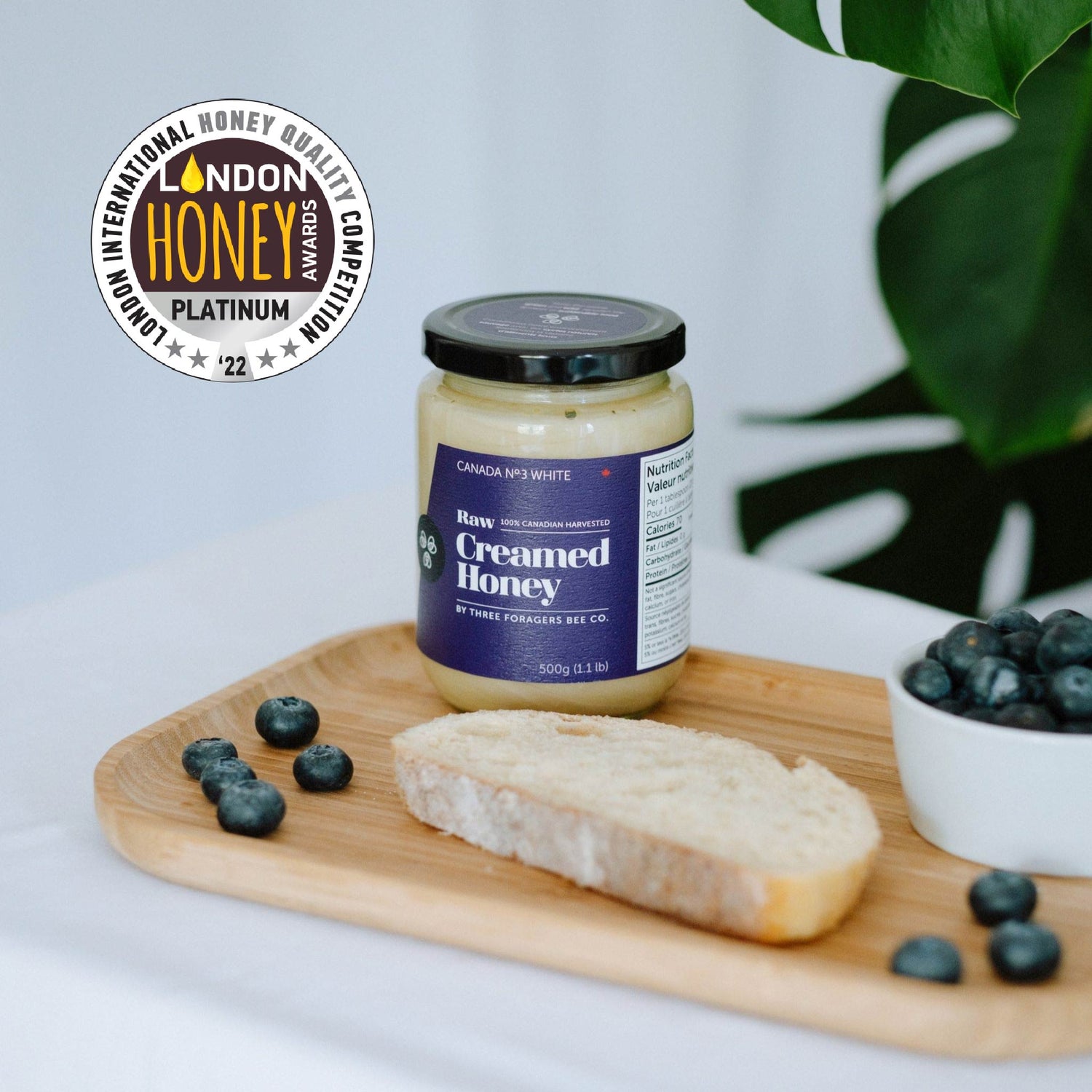We all grow up learning that bees make honey: it’s just a fact of life. But many people don’t know that of the over 20,000 species of bees on Earth, half are solitary! In fact, only a few of them make honey, and we only use one species to make delicious Three Foragers raw honey. Apis mellifera, or honey bees as we like to call them, are amazing critters that can produce hundreds of pounds of honey every year. While these insects are the best at producing honey, they aren’t the only insect in the animal kingdom that make honey
What Is Honey?
Before we dive into which insects make honey, we should probably understand what honey is! By definition, honey is a sweet, sticky material produced by insects by processing flower nectar. Simple enough! Honey bees fly around, collect flower nectar, and their bodies turn it into honey which is stored in honeycombs at the hive.
What Other Bees Make Honey?
Bumblebees also make honey, but on a much smaller scale. Most of the honey they collect is for the queen and they do not build up stores of honey like the honey bee. Since honey bees produce so much honey, we only take what we need, making sure that the bees have enough to survive all year long. In the case of bumblebees, it wouldn’t be a good idea to take what little honey they produce.

Bumblebee collecting nectar.
There are about 500 species of stingless bees in the world, some of which also produce honey. Stingless bees, which live in warm areas of Australia, are capable of producing just enough honey for humans to collect and enjoy. This type of honey is known as sugarbag. The flavour of sugarbag is much different than our own raw honey. It has a tangier taste and runnier texture as it has higher water content.
Do Any Other Insects Make Honey?
Absolutely! Some species of wasps also make honey, in particular, the Mexican honey wasp. This type of wasp stores and collects honey in its paper-like hive. Local indigenous communities consider the wasp’s honey and larvae a delicacy.
Honeypot ants also make and store honey, but they do so in a very surprising way. While honey bees store honey in their hives, honeypot ants gorge on nectar until their abdomens swell up to the size of a grape. In their nests, they regurgitate the honey from their abdomen to feed the rest of the colony.

“Honeypot Ant”, is licensed under CC BY-SA 4.0
But Why Do They Do This?
Honeypot ants live in very arid environments, and food can be difficult to come by. So when food is available, some of the honeypot ants, called repletes, become pantries full of honey.
Aphids produce a sweet sugary syrup called honeydew. They attach themselves onto different plants and feed on the sap. The waste that they produce from the sap is actually sweet and delicious! Honeydew is an important source of energy for animals and insects, especially when winter arrives and resources become scarce. Indigenous communities also value honeydew as a sugar source.
Honey bees aren’t the only insects that make honey but they are the most prolific. The honey bees at our farms in Saskatchewan and British Columbia produce hundreds of pounds of honey a year, and that’s why we can share their delicious raw honey with all of you. If you have any questions about our bees, or other honey-making insects, write them in the comment section below or send us a message on Facebook.



2 comments
Stingless bees in Central and South America also make honey! They are so fun to watch.
I was dreaming and in that dream I was trying to remember that kind of bird produced honey, when I awoke naturally I knew that was erroneous. Dreams really bumfuzzle you some times! JEO